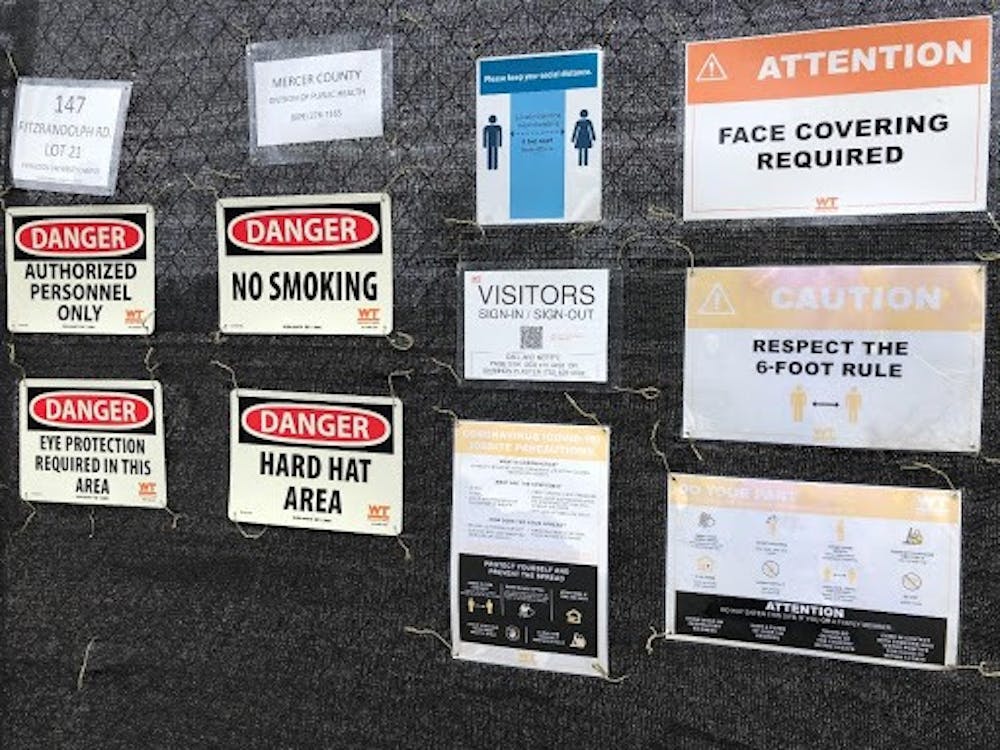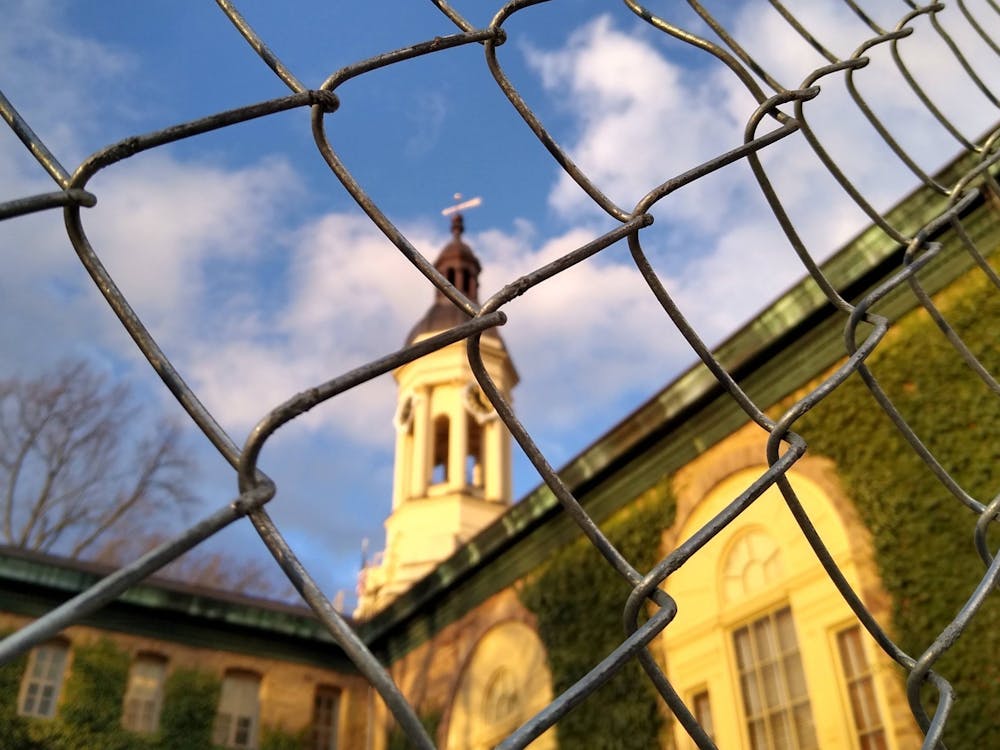Over the last year, the COVID-19 pandemic has disrupted much of campus life, but the University’s various construction projects, such as the building of new residential colleges and the geo-exchange facilities, continue.
“Every project, the large and small, has been impacted in some way that usually is a result of contractors falling ill,” Executive Director of Construction Management William Bausmith said in an interview with The Daily Princetonian. “But I would say there has not been a large impact on the progress of the construction.”

Hank Ingham / The Daily Princetonian
Although the construction contractors are not part of the University’s asymptomatic testing program, they are taking COVID-19 safety precautions.
“Contractors are alerted of the posted EHS requirements on campus, and they are required to comply with state and federal CDC guidelines,” Bausmith said.
They also keep a management plan, which generally includes a daily log of which workers are on site, contact information, and questionnaires for the workers if they fall ill. “There’s a questionnaire the contractor is required to fill out, so they can determine what the next steps regarding COVID or contact tracing are,” Bausmith explained.
As with past University construction projects, noise remains a concern. “Our first and primary constraint is the legal requirements that are instituted by the local municipality,” Bausmith said.
In addition, he said construction management is careful “to work closely with housing and public safety and a whole lot of campus facilities, campus stakeholders to stay in constant communication to be aware of where complaints or concerns are being raised and try to make smart decisions based on those messages.”

Even though there are fewer people on campus this year, these commitments have not changed much.
“There are less ears, there are less eyes on campus, but it did not have a significant impact on the way we conducted work,” Bausmith noted.
With recent concerns about security on campus, Bausmith stated that in addition to being watched by University security and public safety officers, construction sites are enclosed by a fence and gate system that is locked at the end of the day. For open buildings like the new residential colleges, the lights are left on to spot any unsecured debris blowing around as well as any potential intruders.
“It helps us, it helps public safety get an eye into those floors in those parts of the building that would otherwise unlit be invisible,” Bausmith explained, although he pointed out that this was rarely an issue. “Generally speaking, we have not had a problem with the public trying to get into sites after hours. It happens occasionally, but it has not risen to the level of being a systemic or significant problem.”

Another aspect of the new construction projects is their use of geo-exchange, which Bausmith explains as “using the Earth in its natural condition as an energy radiator, if you will, where we can store cold water when we need it and we can extract hot water when you need it.”
Over the next decade, all campus buildings will be converted over to this new system, which Bausmith calls “quite likely the most impactful environmental benefit of the Capital Plan” and an important part of the University’s plan to be carbon neutral by 2046. Using wells placed in the ground below the former Lot 21, among other places, the new facilities will connect to the existing conventional chiller plant and “condition” water to distribute to buildings across campus.

Hank Ingham / The Daily Princetonian
The project’s two main buildings are denoted by two acronyms: TIGER (Thermally-Integrated Geo-exchange Energy Resource, located by FitzRandolph) and its CUB (Central Utility Building, located on the new Lake Campus).
“I’m not surprised that it's a lot more fun to talk about a TIGER or a CUB than it is to talk about Geo-Exchange Facility Number One, Geo-Exchange Facility Number Two. But it’s catchy and it is, you know, a very fair description of what that facility does,” Bausmith commented.
Overall, Bausmith said he’s excited to be part of such a project.
“There are things that people will not see in the end; when the buildings are constructed, they will find that they’re in a beautiful building and living space. But the effort that's been put in to bring us to carbon neutral for 2046, that’s really something that other peer institutions I think could aspire to. I’m very proud to be part of it.”
Editor’s Note: An earlier version of the article had misquoted “DHS” instead of “EHS” (Environmental Health and Safety) in Bausmith’s statement.








